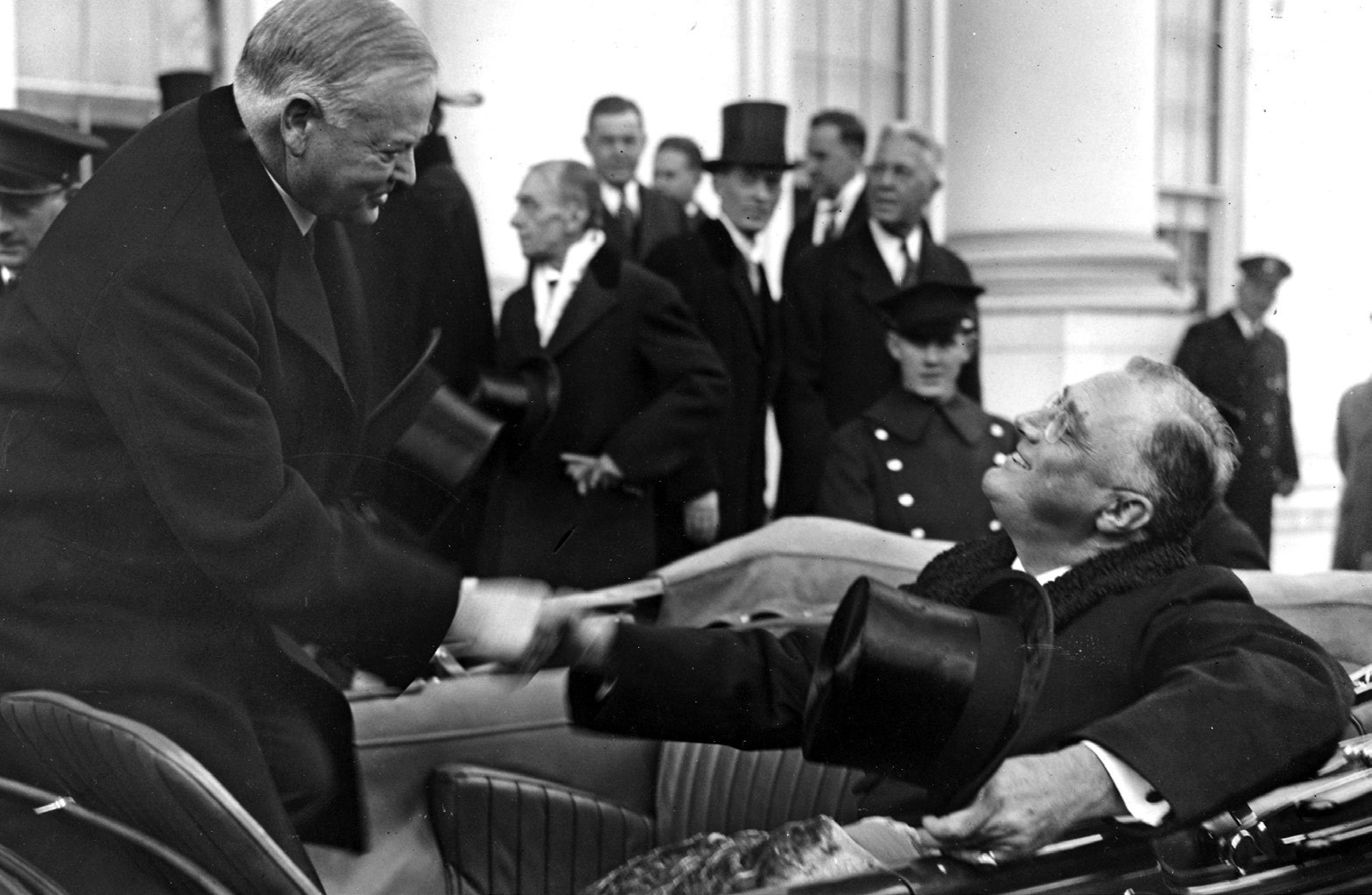
The concept of realignment describes a major change in the support base for a candidate or party in a US presidential or congressional election. A critical election can see specific groups or classes of voters change their party allegiance to ‘realign’ with another political party or candidate. These political realignments can be caused by ideological changes within parties, by policy choices made by particular presidents, or by major cultural or economic changes. Such changes in partisan alignment often last for decades, replacing previous patterns.
The economic depression prompted by the 1929 Wall Street Crash saw the electoral map of the USA completely recoloured, with red Republican dominance under Herbert Hoover swept away by a blue wave of support for Franklin D. Roosevelt and the Democrats. Roosevelt was able to forge an entirely new and unlikely electoral ‘New Deal coalition’ of voters, encompassing the white south, industrial labour unions, and northern African-Americans (who had previously been denied the vote or had voted Republican) among others.
Your organisation does not have access to this article.
Sign up today to give your students the edge they need to achieve their best grades with subject expertise
Subscribe




